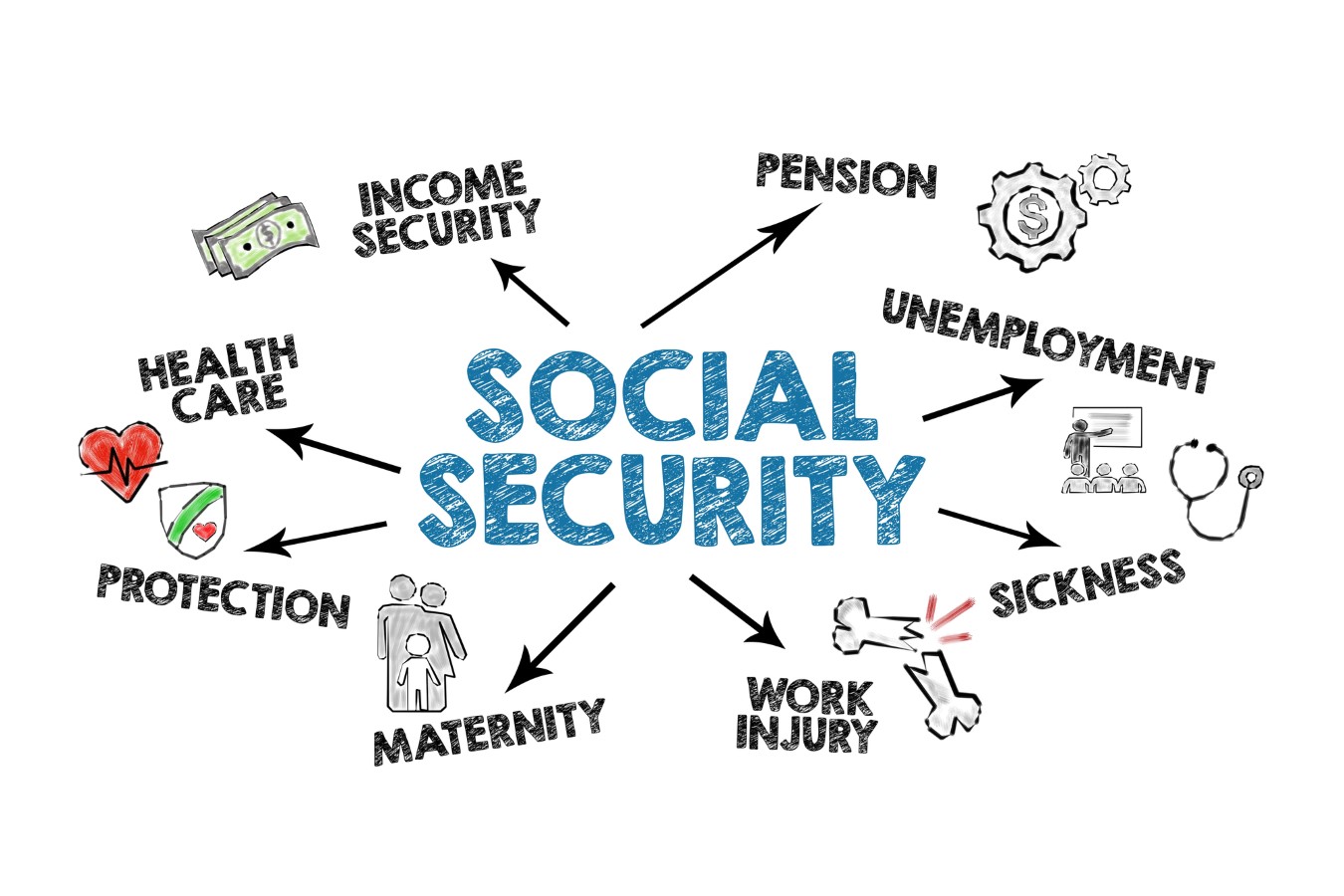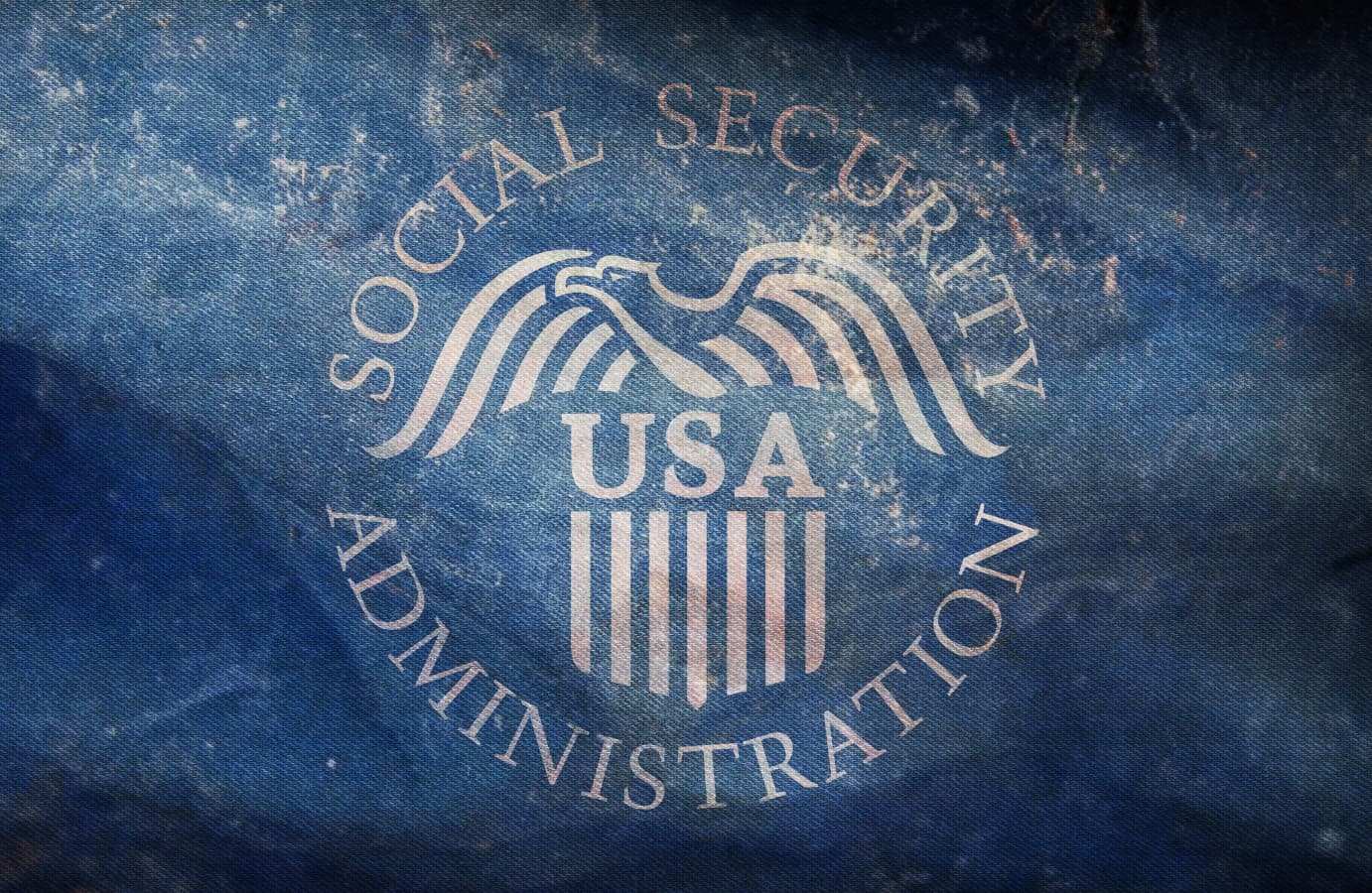Social Security’s Clawback Policy Could Bankrupt Seniors: The Devastating Impact Of 100% Overpayment Withholdings – Financial Freedom Countdown

The Social Security Administration (SSA) has reinstated a controversial policy that could significantly impact seniors’ finances.
Starting March 27, 2025, the SSA will begin withholding 100% of overpayments from Social Security recipients’ benefits, reversing the previous policy that allowed for just 10% withholding.
This change is expected to recover approximately $7 billion over the next decade but has raised serious concerns about the financial well-being of vulnerable Americans.
How the 100% Withholding Could Bankrupt Seniors

The abrupt policy shift is alarming, particularly for elderly and low-income Americans who rely heavily on Social Security benefits.
With the possibility of entire benefit checks being withheld until overpayments are fully recovered, many seniors may face a financial crisis. Some individuals, especially those with limited income or chronic health issues, could find themselves without any funds to cover basic living expenses.
Why Do Overpayments Occur

Overpayments often occur due to mistakes made by the SSA in calculating benefits. Or beneficiary neglecting to update their income, marital status or work situation in a timely fashion with the SSA.
Regardless of whether the error is on the part of the SSA or the beneficiary, the rule now mandates that the government claw back the overpaid amounts.
Critics argue that this policy unfairly punishes vulnerable Americans for mistakes they may not have been aware of.

To minimize the risk of being overpaid, consider these steps
1. Keep Your Information Updated: Report any changes to your monthly income, marital status, or financial resources that could impact your benefit amount.
You can update your details by calling the SSA or accessing your my Social Security account online.
2. Stay Vigilant: If you notice an unexpected increase in your benefits, reach out to the SSA for clarification.
You can also contact them to understand how your payments are calculated.
3. Set Overpayments Aside: If your social security amount suddenly increases, do not spend the overpayment and have the money earmarked for repayment.
Document all correspondence with SSA and wait for SSA to confirm the increased amount is correctly calculated and that you are entitled to it.
The Resumption of Debt Collection Through the Treasury Offset Program

In addition to the clawback policy, the SSA has resumed debt collection activities through the Treasury Offset Program (TOP), which intercepts federal and state payments to recover debts owed by beneficiaries.
The SSA began using TOP in 1992 to collect overpayments tied to Old-Age, Survivors and Disability Insurance (OASDI) and Supplemental Security Income (SSI) and has successfully recovered nearly $2 billion in overpayments through this program.
This debt collection program has been paused since March 2020 but is now back in operation, impacting an estimated 280,000 Americans with a total debt balance of $2.7 billion.
The program has raised concerns about its fairness and the toll it could take on recipients.
Lee Dudek, the acting commissioner of the SSA, said in a statement: “Resuming collections through the Treasury Offset Program is a critical step in our commitment to being good stewards of taxpayer funds and ensuring the integrity of our programs. We are dedicated to recovering overpayments while providing individuals with the necessary information and options to address their debts.”
How the SSA’s Debt Recovery Strategy Could Harm Medicare Access

For seniors enrolled in Medicare, the 100% withholding could disrupt automatic deductions for Medicare Part B premiums.
If Social Security payments are stopped entirely, it could leave seniors without the necessary funds to cover their health insurance premiums and they may accidentally also lose their Medicare coverage.
It is currently unclear if Medicare premiums will be deducted first before the 100% overpayment penalty is imposed. To be on the safer side, it is advisable to ensure you have another source of payments for Medicare premiums.
With medical bills continuing to pile up, seniors could face a serious health care crisis, worsening the financial strain caused by the clawback.
The Growing Inequality Between Wealthy Americans and Social Security Beneficiaries

As policies targeting the working class and senior citizens intensify, the wealth gap in America continues to widen.
Critics argue that Social Security overpayment recoveries disproportionately affect low-income Americans, especially seniors.
With cuts to federal programs like Social Security, the wealthiest Americans are insulated from the financial strain faced by vulnerable groups.
Could There Be a Way to Prevent the Clawback Policy from Destroying Lives?

Some believe that better oversight, more transparent communication from the SSA, and alternative debt recovery methods could help mitigate the harm caused by the clawback policy.
Until the system is reformed, however, seniors are left to navigate an increasingly hostile and difficult bureaucratic landscape.
More protections need to be put in place to prevent overpayments from becoming a financial death sentence for vulnerable beneficiaries.

The SSA’s renewed focus on recovering overpayments comes in response to growing financial pressures within the Social Security system.
The program is on track to face insolvency by 2035, leading to significant cuts in benefits.
To preserve the integrity of the program, the SSA has adopted stricter recovery measures. However, critics argue that these changes will disproportionately harm those who need assistance the most.
The Political Backdrop of Trump Administration’s Influence on SSA Policies

The decision to restore the 100% withholding policy is part of a broader initiative spearheaded by the Department of Government Efficiency (DOGE), under the Trump administration, aimed at reducing government spending.
This includes significant workforce cuts within the SSA, which could result in further delays and errors in benefit processing.
The shift towards more stringent financial measures is seen as part of a wider push to reduce federal budget deficits, even at the expense of vulnerable beneficiaries.
A Stark Contrast to the Previous Administration’s Approach

In stark contrast, the Biden administration had previously reduced the clawback rate to 10% in an attempt to ease the financial burden on seniors.
This change was lauded by many advocacy groups, which emphasized that clawing back too much from the elderly would cause unnecessary harm.
Critics argue that the Trump administration’s reversal of this policy is cruel-hearted and overlooks the very real hardships that many recipients face.
What is the Extent of SSA’s Overpayments

The August 2024 report from the Social Security Administration’s Office of the Inspector General estimated that the agency issued nearly $72 billion in improper payments—primarily overpayments—between fiscal years 2015 and 2022.
While this represented less than 1% of total benefits paid during that time, the report noted that as of September 2023, $23 billion in overpayments remained uncollected.
When is the Change Happening?

Starting March 27, 2025, any new Social Security overpayments will be recovered by withholding the recipient’s future benefits in full until the debt is repaid.
What If I’m Already Paying Back an Overpayment?

For beneficiaries who are already repaying an overpayment, the current withholding rate will remain unchanged, according to the agency.
What About SSI Overpayments?

The withholding rate for Supplemental Security Income (SSI) overpayments will stay at 10%.

Going forward, any beneficiary who has been overpaid will automatically be placed in full recovery, meaning 100% of their Social Security payment will be withheld until the debt is repaid, according to the SSA.
If full recovery creates financial hardship, beneficiaries can contact the SSA at 1-800-772-1213 or visit their local office to request a lower repayment rate.
The agency will wait at least 30 days (plus five additional mail days) after sending an overpayment notice before beginning collection.
Repayment options include credit card, online bill pay, or check. More details are available on the SSA website.
If a beneficiary is no longer receiving Social Security benefits or falls behind on a repayment plan, the SSA may recover the debt by intercepting federal tax refunds, garnishing wages, or reporting delinquencies to credit bureaus.
What You Can Do If You Receive an Overpayment Notice

If you receive an overpayment notice, you have the right to appeal or request a waiver if you believe the overpayment was not your fault or if you cannot afford repayment.
The SSA also offers flexible repayment plans, but the process of navigating the system could be a bureaucratic nightmare for many beneficiaries, especially when considering the shrinking workforce and office closures.
Political Leaders Have Spoken Out Against Harmful Policy

Not all lawmakers are in favor of the 100% withholding policy.
In the past, Republicans have advocated for eliminating the requirement for beneficiaries to repay the government altogether. In August of 2020, three former members of the House Ways and Means Committee commended the SSA for “streamlining” the waiver process for overpayments. “Americans should never be responsible for debt resulting from government decisions,” they stated.
Republican Senator Rick Scott (R-Fla.) had previously warned that the policy would bankrupt many seniors. In a November 2023 post, Senator Scott said, “Social Security needs to be held accountable for these errors, not Florida seniors.”
In early 2024, under former Social Security Commissioner Martin O’Malley, repayment requirements were adjusted, reducing the withholding rate from 100% to 10%. However, it will now return to 100% in most cases.
O’Malley wasted no time in denouncing the move. “What they’re saying is that the person can fight their way into a crowded 800 number, or fight their way with a cane and a walker into a field office that, oh by the way, might be closed. It’s cruel-hearted, and it’s contrary to good conscience and equity.”
O’Malley is a former Democrat Governor and had thrown his hat in the ring for the DNC Chair after his SSA stint.
A Growing Crisis in Social Security’s Oversight and Management

As the Social Security Administration’s workforce shrinks due to ongoing budget cuts, there are growing concerns about the agency’s ability to properly manage and process benefits.
With fewer staff and a dwindling budget, mistakes and delays are expected to increase. The new policy of collecting overpayments aggressively will only make these issues worse, according to critics.
If beneficiaries are forced to repay overpayments through the full withholding of benefits, the immediate financial hardship could have long-lasting effects.
For many, losing their Social Security check completely could result in a loss of housing, food insecurity, and a decline in health.
The risks of such drastic measures have led to widespread alarm from social service organizations and legal experts.

Looking ahead, the future of Social Security remains uncertain. While efforts to address overpayment recovery may provide short-term savings, there is little long-term strategy for addressing the larger financial challenges the program faces.
With a growing number of beneficiaries and a looming insolvency crisis, Social Security will need substantial reform to remain sustainable. However, such reforms may come at a steep cost to those who rely on the program the most.
A Necessary Change or a Crisis in the Making?

The return to the 100% withholding policy represents a bold but deeply controversial move by the SSA. While intended to address financial pressures, the policy raises critical questions about the government’s responsibility to protect its most vulnerable citizens.
With the full impact of these changes still unfolding, the financial future of millions of Americans hangs in the balance.
Like Financial Freedom Countdown content? Be sure to follow us!

The Social Security Administration (SSA) has announced sweeping budget cuts totaling more than $8…
Social Security Slashes $800M in Costs—But Could It Lead to “Breaking Social Security”?
Treasury I Bond Rates Drop from 4.28% to 3.11% — But with a 1.2% Fixed Rate Locked for 30 Years, Is It Still a Smart Investment?

Inflation has become a significant concern. During the past three years of surging inflation, I bonds offered a safe and attractive investment option. However, with recent lower CPI numbers, the current composite rate for I bonds has dropped to 3.11%, a sharp decline from the enticing 9.62% annual rate available in May 2022 or even the 4.28% available for bonds purchased before October 31st. As rates decrease, investors are now considering whether it’s still worth buying Series I bonds.

More than 1.1 million Americans have received long-awaited retroactive Social Security payments, …
Social Security Sends Over $7.5 Billion in Retroactive Benefits —But Some May Face a Tax Surprise

Millions of retirees counting on Social Security to keep up with rising costs may face yet anothe…
Seniors Brace for Another Social Security Letdown as 2026 COLA Prediction Signals Trouble Ahead
Trump’s Tax Plan Ends Carried Interest Loophole, Hits Sports Owners, and Eases SALT Cap

President Donald Trump met with House Republican leaders at the White House on Thursday to outl…
Trump’s Tax Plan Ends Carried Interest Loophole, Hits Sports Owners, and Eases SALT Cap

Did you find this article helpful? We’d love to hear your thoughts! Leave a comment with the box on the left-hand side of the screen and share your thoughts.
Also, do you want to stay up-to-date on our latest content?
1. Follow us by clicking the [+ Follow] button above,
2. Give the article a Thumbs Up on the top-left side of the screen.
3. And lastly, if you think this information would benefit your friends and family, don’t hesitate to share it with them!

John Dealbreuin came from a third world country to the US with only $1,000 not knowing anyone; guided by an immigrant dream. In 12 years, he achieved his retirement number.
He started Financial Freedom Countdown to help everyone think differently about their financial challenges and live their best lives. John resides in the San Francisco Bay Area enjoying nature trails and weight training.
Here are his recommended tools
Personal Capital: This is a free tool John uses to track his net worth on a regular basis and as a retirement planner. It also alerts him wrt hidden fees and has a budget tracker included.
Platforms like Yieldstreet provide investment options in art, legal, real estate, structured notes, venture capital, etc. They also have fixed-income portfolios spread across multiple asset classes with a single investment with low minimums of $10,000.




